Chapter: Obstetrics and Gynecology: Embryology and Anatomy
Development of the Ovary
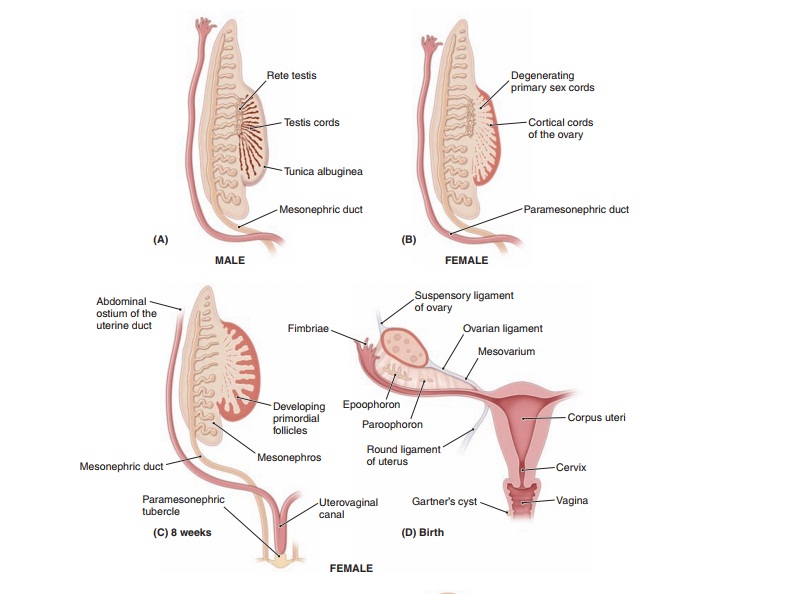
Development of the Ovary
Ovaries are homologous to the
testes in the male. Bothtypes of gonads
begin development as gonadal or genitalridges that form during the 5th
week of gestation from theurogenital ridges. Fingerlike bands of epithelial
cells pro-ject from the surface of the gonad into each gonadal ridge, forming
irregularly shaped primary sex cords.
Growth of these cords into the gonadal ridge results in the creation of an
outer cortex and an inner medulla in the indifferent gonad.
Primordial
germ cells that give rise to gametes appearin the wall of the
yolk sac (now called the umbilical vesicle) during the 3rd week of development
(see Fig. 4.1). From this location, primordial germ cells migrate along the
allantois in the connecting stalk to the dorsal mesentery of the hindgut and
then into the gonadal ridges, where they become associated with the primary sex
cords by the 6th week. In the female, the primordial germ cells become oogonia, which divide by mitosis during
fetal life; nooogonia are formed after birth. If the primordial germ cells fail
to migrate to the genital ridges, the ovary does not develop.
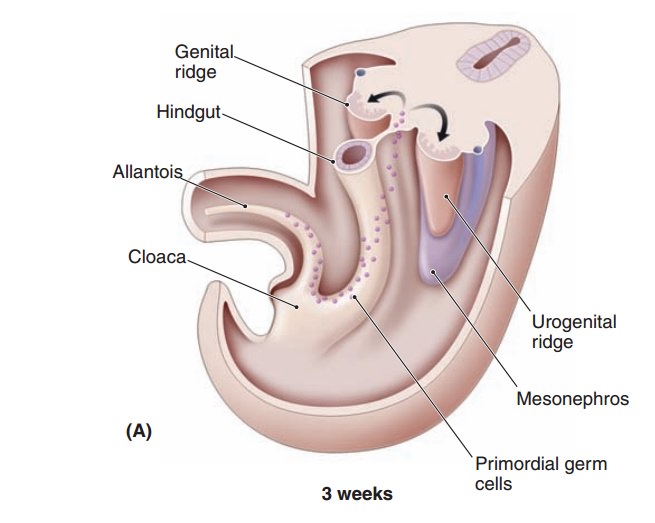
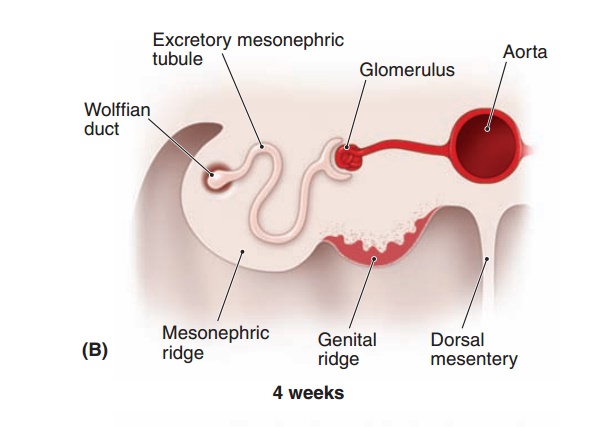
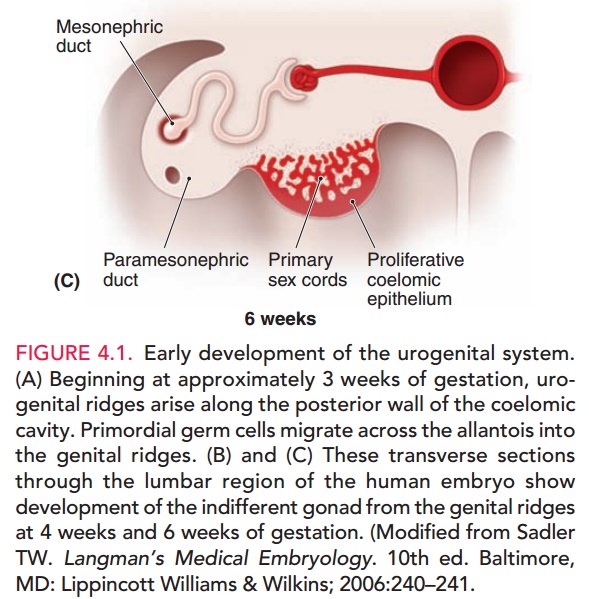
By approximately the 10th week of
development, the undifferentiated gonad has developed into an identifi-able
ovary. Primary sex cords degenerate, and secondary sex cords or cortical cords appear. These cords
extend from the surface epithelium into the underlying mesenchyme (Fig. 4.2,
right column of figure). By approximately 16 weeks
Each follicle eventually consists ofan oogonium, derived from a
primary germ cell, sur-rounded by a single layer of squamous follicular cells,
derived from the cortical cords. Follicular maturation begins when the oogonia
enter the first stage of meiotic division (at which point they are called primary oocytes). Oocyte development is then arrested until puberty, when one or more
follicles are stimulated to continue development each month.
In male embryos, the primary sex
cords do not degen-erate; instead, they develop into seminiferous (or testis)
cords that eventually give rise to
the rete testis and semi-niferous tubules (see Fig. 4.2, left column of figure).
A layer of dense connective tissue (the tunica
albuginea) separates the seminiferous cords from the surface epithe-lium,
which eventually becomes the testis. Cortical cords do not form in the male
embryo.
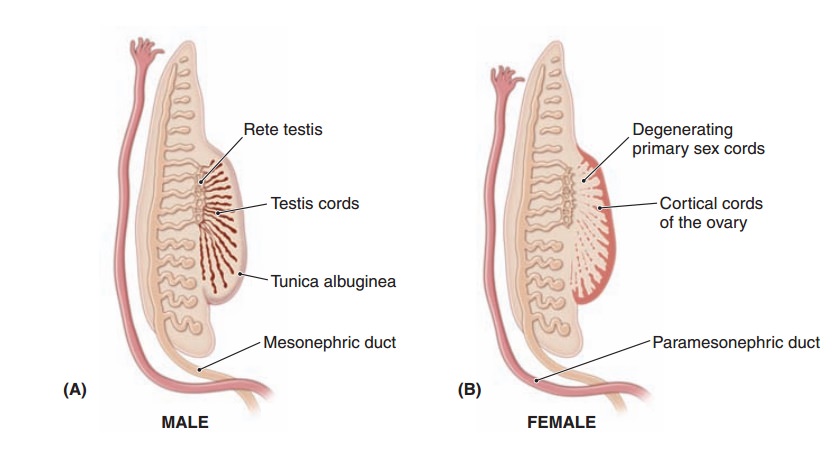
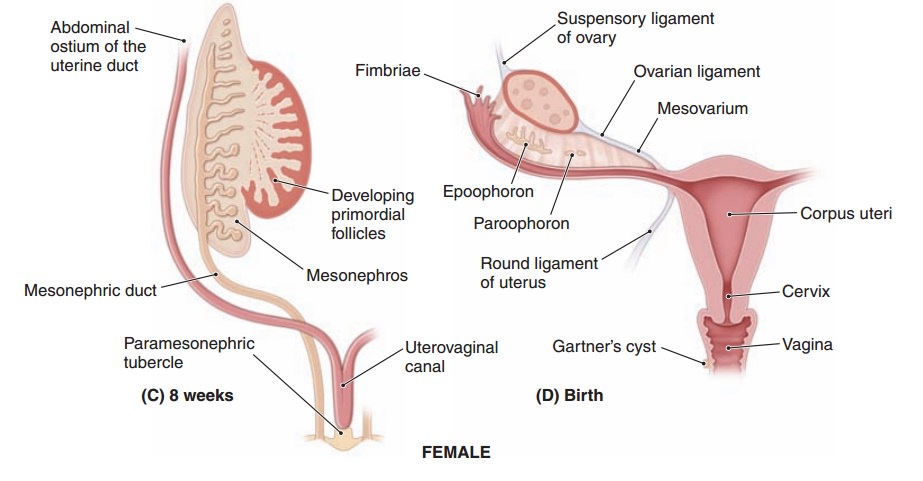
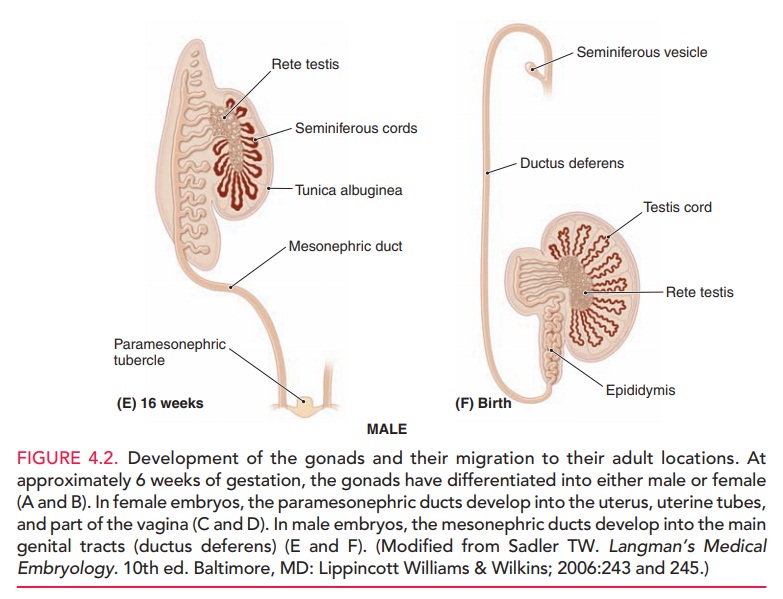
As they develop, gonads descend
from their starting point high up in the primitive body cavity, where they are
attached to a mesenchymal condensation called the gubernaculum. Ovaries move caudally to a location justbelow the rim
of the true pelvis immediately adjacent to the fimbriated end of the fallopian
tubes. The testis, on the other hand, continues to descend, eventually
migrating through the anterior abdominal wall just superior to the inguinal
ligament. The gubernaculum in the female fetus eventually forms the ovarian and
round ligaments (see Fig. 4.2 and Fig. 4.3).
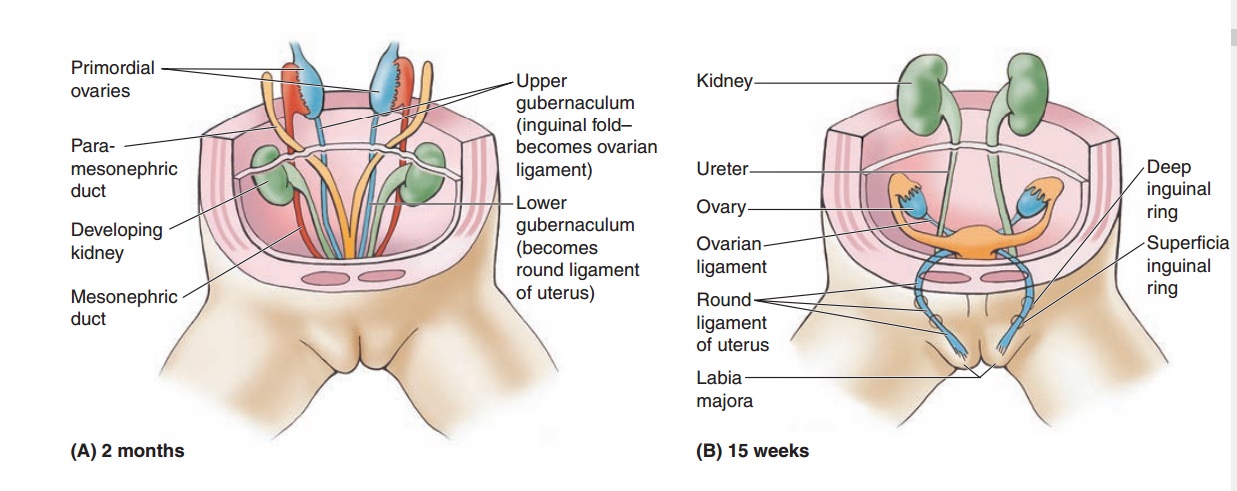
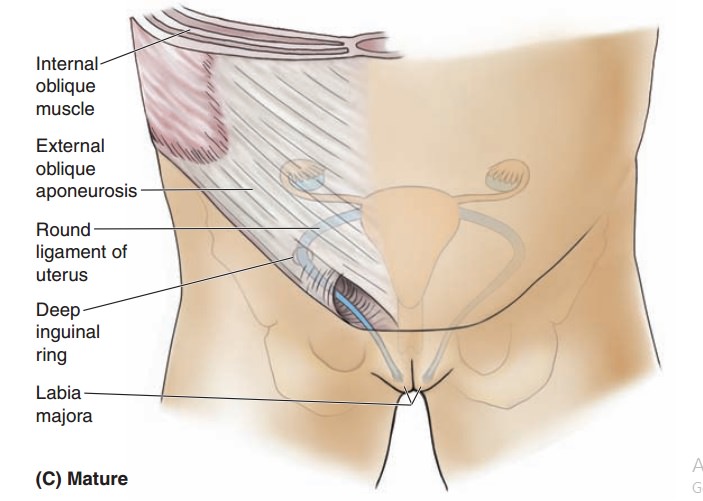

Related Topics